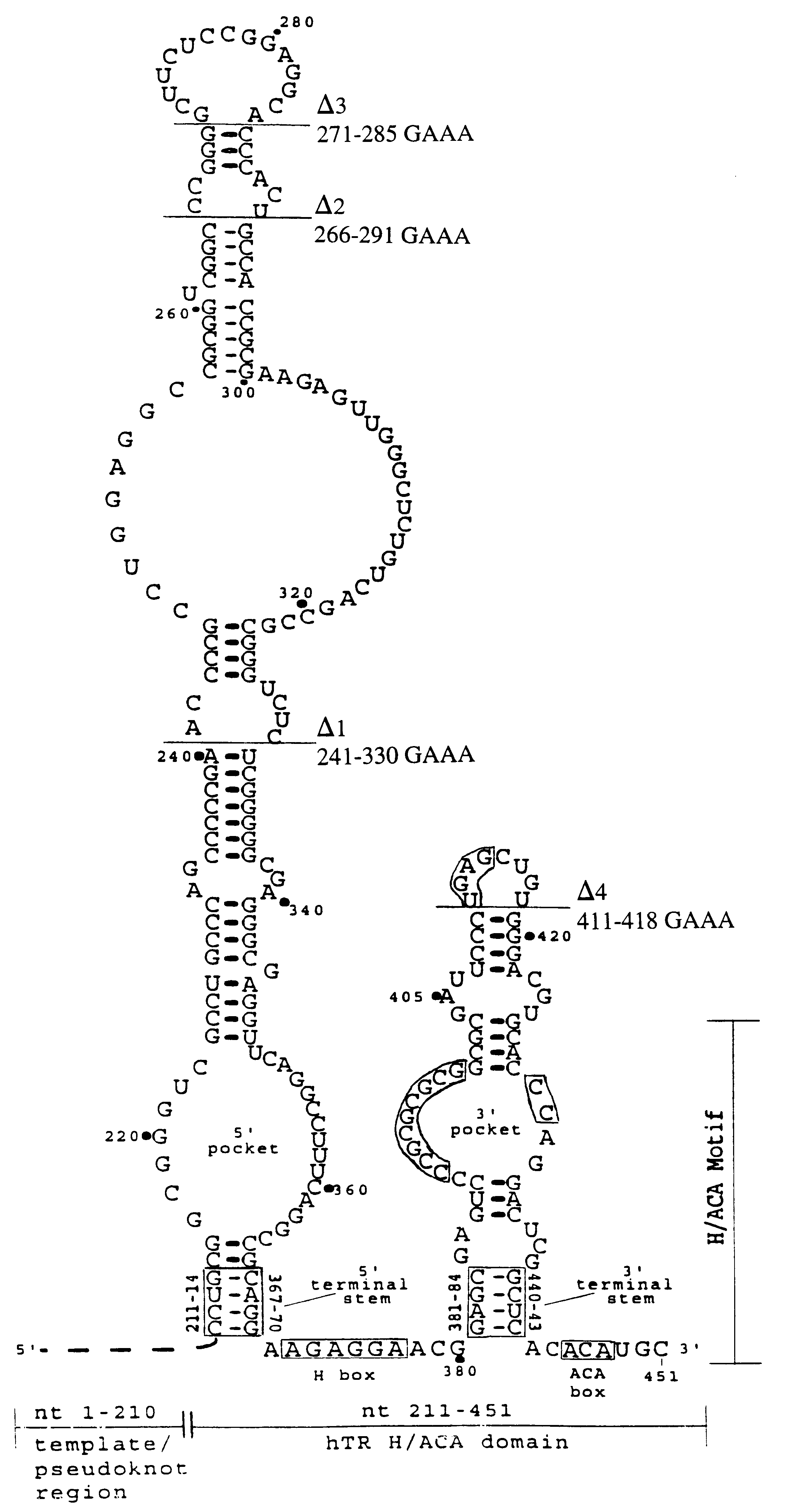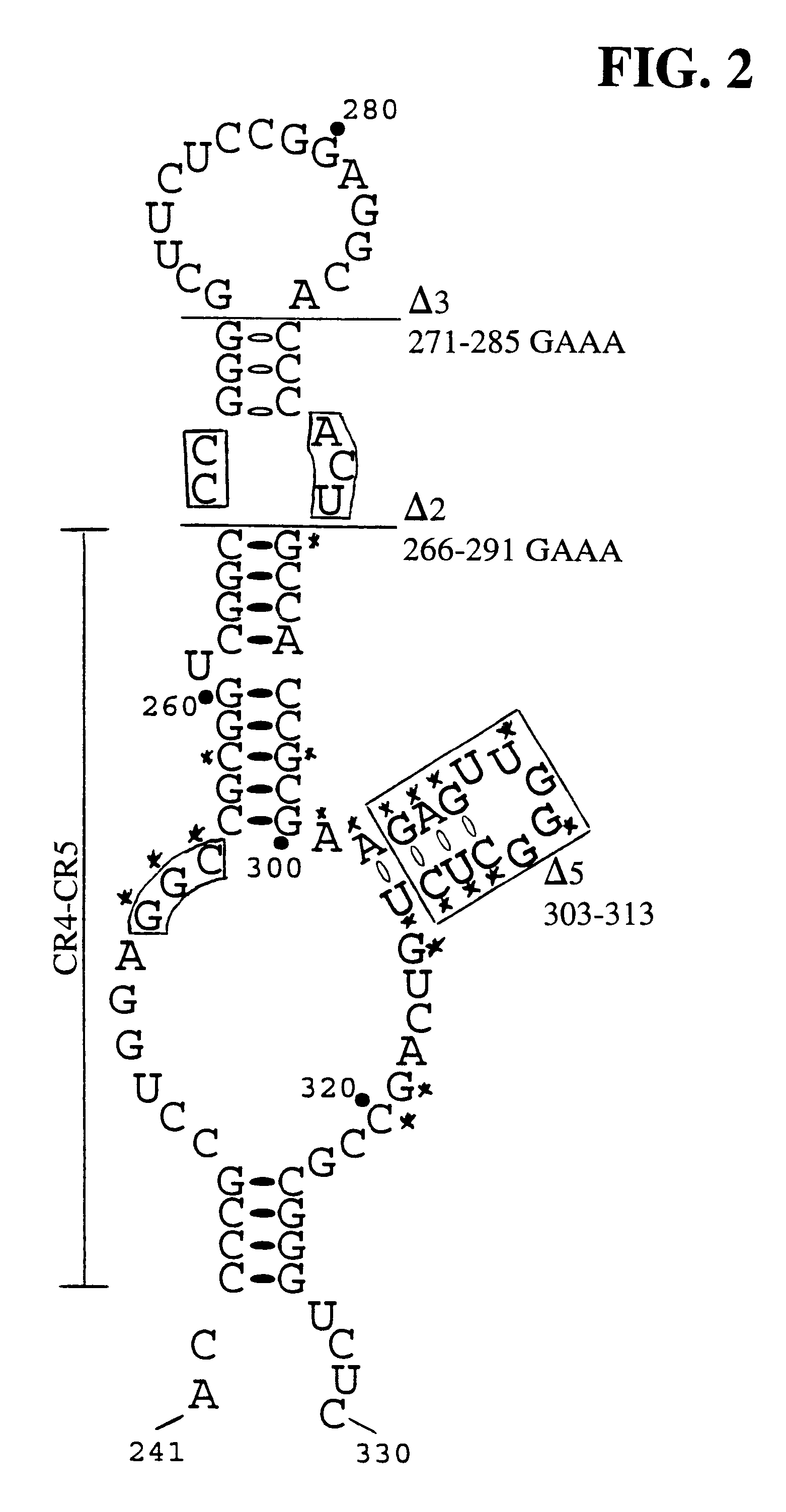Human telomerase RNA elements
a technology of human telomerase and rna, which is applied in the direction of transferases, instruments, peptides, etc., can solve the problems of proliferative deficiencies, increased risk of cancer in tissues, and misregulation of telomerase activity,
- Summary
- Abstract
- Description
- Claims
- Application Information
AI Technical Summary
Problems solved by technology
Method used
Image
Examples
Embodiment Construction
The following descriptions of particular embodiments and examples are offered by way of illustration and not by way of limitation. Unless contraindicated or noted otherwise, in these descriptions and throughout this specification, the terms "a" and "an" mean one or more, the term "or" means and / or.
hTR H / ACA domain sequence requirements for accumulation and activity in vivo. To investigate the sequence requirements for hTR accumulation and activity in vivo, we utilized our previously characterized recombinant hTR expression system (Mitchell et al., 1999a). Recombinant hTR was marked with a sequence tag to permit specific detection by Northern blot hybridization and expressed by transient transfection of telomerase-positive, adenovirus-transformed human embryonic kidney (293) cells. Like endogenous hTR, recombinant hTR was expressed from an RNA polymerase II mRNA-type promoter. Both endogenous and recombinant forms of mature hTR migrate as doublets through denaturing 5% polyacrylamide...
PUM
| Property | Measurement | Unit |
|---|---|---|
| Affinity | aaaaa | aaaaa |
Abstract
Description
Claims
Application Information
 Login to View More
Login to View More - R&D
- Intellectual Property
- Life Sciences
- Materials
- Tech Scout
- Unparalleled Data Quality
- Higher Quality Content
- 60% Fewer Hallucinations
Browse by: Latest US Patents, China's latest patents, Technical Efficacy Thesaurus, Application Domain, Technology Topic, Popular Technical Reports.
© 2025 PatSnap. All rights reserved.Legal|Privacy policy|Modern Slavery Act Transparency Statement|Sitemap|About US| Contact US: help@patsnap.com



